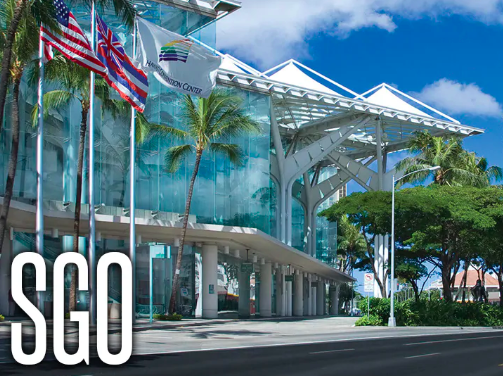By Ian Ingram
But showed promise in PD-L1-positive group.
Adding avelumab (Bavencio) to pegylated liposomal doxorubicin (PLD) failed to improve survival outcomes for patients with platinum-resistant or refractory ovarian cancer in a phase III trial reported here.
In the intent-to-treat (ITT) population, median progression-free survival (PFS) was 3.7 months with the combination versus 3.5 months with PLD alone, while overall survival (OS) was 15.7 months versus 13.1 months, respectively, said Eric Pujade-Lauraine, MD, PhD, of Hôpital Hôtel-Dieu in Paris.
Neither numerical advantage achieved statistical significance.
“Avelumab plus PLD showed clinical activity, but in this unselected population the trial did not meet the primary objective,” said Pujade-Lauraine during his presentation at the Society of Gynecologic Oncology (SGO) meeting.
Subgroup analyses of the ITT population suggested that patients with two to three prior regimens (HR 0.64) and those without bulky disease (HR 0.70) were more likely to benefit with the combination. And for PFS, an advantage in platinum resistant patients (HR 0.75) was seen with the combination.
“A prespecified analysis indicated a potential role for PD-L1 expression as a predictor of clinical benefit,” said Pujade-Lauraine.
In PD-L1-positive disease (57% of patients), PFS was improved and OS trended longer with the combination over PLD alone:
- PFS: 3.7 vs 3.0 months, respectively (HR 0.65, 95% CI 0.46-0.92)
- OS: 17.7 vs 13.1 months (HR 0.72, 95% CI 0.48-1.08)
Pujade-Lauraine noted that the investigators were working hard on further subgroup analyses.
“The design of this study may have been the fatal flaw,” said SGO discussant Thomas Herzog, MD, of the University of Cincinnati Cancer Institute in Ohio.
“There’s a little trend towards an improvement in overall survival and PFS for those patients that received the combination,” he said, commenting on the ITT findings. “But neither was statistically significant, so essentially this was a negative trial.”
Herzog noted that with an objective response rate of 4.2%, the PLD arm performed “quite poorly.” In the combination arm, the rate of response was 13.3%, which included two complete responses.
But he called “compelling” the subgroup findings that patients with resistant versus refractory disease, and those with smaller tumor volume, may have benefited from the combination. He also said that the type of doxorubicin each center used is an important consideration as well, as efficacy has not always been consistent. “That needs to get teased out as well,” he said.
“I’m not sure there’s a path forward there, but it’s probably worth looking at,” Herzog said regarding whether FDA approval could be an option based on the current findings.
“There’s a subgroup there you could probably make a case for having benefit with the combination, it’s just a question of how robust is that data going to be,” Herzog told MedPage Today. “That subgroup analysis [is] going to be critical.”
With regard to study weaknesses, he pointed to the high discontinuation rate in the combination arm due to treatment-related adverse events (AEs) and the lack of a robust biomarker strategy. He suggested that other immunotherapy trials in ovarian cancer may need to consider whether to change eligibility criteria or at least stratify by PD-L1 expression status.
He noted that there were a high number of clear cell cancers (13%) and said that the study may have been hurt by the mostly poor-prognostic patients, pointing to the 48% with primary and platinum resistant and the 25% who were platinum refractory.
JAVELIN Ovarian 200 randomized 566 ovarian cancer patients 1:1:1 to the anti-PD-L1 agent avelumab alone, PLD alone, or the two agents combined. With a PFS of 1.9 months and OS of 11.8 months, the avelumab monotherapy arm performed the worst, and crossed the line of futility at an interim analysis. A previous phase Ib trial of avelumab alone had shown a response rate of 9.6%, but it was just 3.7% in this study. For PD-L1-positive disease, PFS and OS were 1.9 and 13.7 months, respectively, with avelumab alone.
Eligible patients had platinum-resistant or refractory disease and no more than three prior lines of therapy. Nearly half (47%) had just one prior line of therapy. Overall, 37% of patients had bulky disease. PD-L1 positivity was defined as ≥1% membranous PD-L1 in tumor cells and/or ≥5% of PD-L1-positive cells in the tumor area.
For PD-L1-negative disease, OS was numerically best with PLD alone, at 14.1 months compared with 13.6 months with the avelumab combination, and 10.5 months with avelumab alone.
Herzog called the three-arm trial design one of the study’s strengths, as it allowed for assessment of the contribution effect of each agent.
Grade ≥3 treatment-related AEs were highest in the combination arm at 42.9%, followed by 31.6% with PLD alone and 16.0% with avelumab monotherapy. The most common grade ≥3 treatment-related AEs in the combination arm were palmar-plantar erythrodysesthesia syndrome (9.9%), neutropenia and rash (9.3% each), fatigue (7.1%), and stomatitis (5.5%).
This article was published by Medpage Today.


